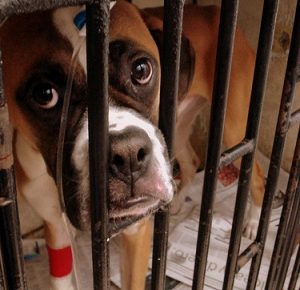Blowfish and Pufferfish carry a deadly toxin. Called Tetrodotoxin, it is an extremely potent poison and is stored in the skin and internal organs of the fish. Affecting the nervous system, Tetrodotoxin continues to be poisonous when the fish is dead. Even eating a small amount of these fish can be deadly.
While Blowfish and Pufferfish are usually seen in the summer, they can appear anytime.
Signs of poisoning begin with a dog licking its lips and panting. Further signs are drooling, vomiting, weakness usually beginning in the rear legs continuing to the head. The pet will then be unable to swallow and suffers breathing impairment leading to death.
There is no antidote for this toxin. Treatment is non-specific and must be prompt in order to be effective. Your veterinarian will try to remove any unabsorbed toxin by inducing vomiting (emess) or pumping the stomach or introducing activated charcoal into the stomach to absorb any toxin. The pet may be placed on intravenous fluids. A fluid such as Intralipid may be administered to dissolve toxins in the bloodstream. If the pet exhibits difficulty with breathing, a ventilator may be used where a tube is placed down the throat and the machine does the work of inflating and deflating the lungs.
Delayed treatment can cause complications such as pneumonia and brain and organ problems. If you suspect your pet has ingested a blowfish or a pufferfish, take him/her to a vet or emergency room immediately.
You can help prevent poisoning by either keeping your dog leashed or by watching carefully if s/he is eating something when at the beach or near a riverbank. Before you release your dog, check the area for any dead fish or fish parts. Don’t allow anyone to give your pet a fish snack. And if your pet manages to eat something, it’s safest to assume it’s toxic and take him/her to the vet ASAP.
Care should be taken with cats and other carnivorous pets (humans too) as they can be poisoned by eating these highly toxic fish.



